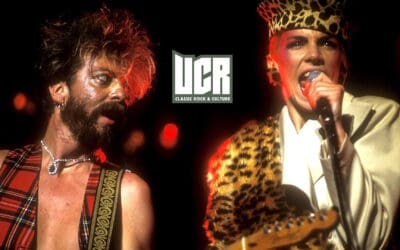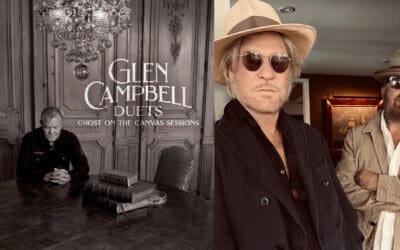Annie Lennox : 100 BEAUTIFUL SONGS

“Here I go remembering again all the anger and the blame…” It’s a defining moment from “Erased,” the ninth track from 2003’ Bare. As much as she assures the listener that she’s “gonna put it all behind,” every note, every beat assures that it’s not really going to happen — and aren’t we all the better for it? It’s a song full bitterness and regret.
When all is said and done, it’s one heartbreaking track.
Top 15 voters
| Mupp Freek | 1 |
| Sverre Espeland | 2 |
| Christopher Fayol | 4 |
| Eric Gustin | 4 |
| Alex Helm | 7 |
| Ener Daniel | 10 |
| Grace Gomez | 10 |
| Daniel Mueller | 12 |
| Fabio Milani | 14 |
| Mark Stevens | 14 |
| Cameron Carr | 16 |
| Clem Stambaugh | 18 |
| Matt Lee Newby | 19 |
| John Schmitz | 21 |
| Lynne Foster | 23 |
I’m gonna put it all behind me
Like nothing ever happened between us
Nothing ever took place between you and me
Yes
Nothin’ ever happened
And if you see me walkin’ down the street
I won’t even recognize you
I’ll just erase you from my memory
Put it all behind me
Because you are erased
All erased
You’ll be sittin’ on someone else’s couch
You’ll be eatin’ off a stranger’s plate
Everything is gonna get wiped out
Like a new start
Like a brand new fresh clean slate
Well here I go remembering again
All the anger and the blame,
People in glass houses shouldn’t throw those stones
But, something just flew through my window pane
My my…
In 2003, Annie released one of the most gut wrenching and emotionally challing albums ever to hit the shelves, ‘Bare.’ Our #23 is “Erased.” A cutting and rhythmic track that moves along like a hungry snake on the hunt for its prey…the utter and total honesty of the music and vocals, finds the sadness and depression of Bare culminating into an angry and unapologetic statement that is “Erased.”
From Jon Perales’ The New York Times interview and article, (April 13, 2003):
“In ”Erased,” she vows to completely forget her ex: ”Nothing ever took place between you and me, yeah, nothing ever happened,” she decides. ”And if you see me walking down the street, I won’t even recognize you.”
Ms. Lennox shied away from describing the songs as direct autobiography. ”Erased,” she insisted, was more about mortality and impermanence than revenge. As for the album as a whole, she said: ”It’s not about what someone did to me. It’s more about my own debate or discussion with myself about pretty fundamental issues, existential issues. How one functions in the world. What is of meaning to you? What is of value to you? How do you lift yourself out of negative thinking? How do you function well?”
”It’s fact and fiction,” she added. ”I start with maybe a line of truth or experience or something that I want to say. And then, because of the lyrical meter and rhyme, I have a lexicon of words I can use that rhyme with a particular word. And of course, it’s associative again. In one line it’s personal. The next line it becomes some invention because it had to be. And then at this point I say it’s universal. As long as I make some symbolic metaphorical sense from the beginning to the middle to the end, that’s O.K. And it doesn’t matter if it’s fact or fiction.”” (Citation: https://www.nytimes.com/2003/04/13/arts/music-annie-lennox-s-bittersweet-dreams.html)
– Dan Mueller
From The New York Times
In the 1980’s, as half of Eurythmics with Dave Stewart, Ms. Lennox sang about love as a maze of joys and deceptions, sweet dreams and bleak dissension, setting her sultry voice against cool, dispassionate synthesizer tones. Eurythmics wasn’t her first band; she had been with Mr. Stewart in a pop-rock group called the Tourists in the 1970’s. But she wrote her first songs for Eurythmics.
”We were looking for something that had a very essential, instant sound to it, very identifiable,” she said. ”It had a groove that comes from black American soul singing and blues music. You take a very strong backbone there, rhythmically. Then you add atmosphere, you infuse it with European alienation, urban angst if you like. And then on top of that you give it voice with sweetness and sadness and beauty.”
After seven albums and a decade of tours, Eurythmics dissolved. ”Diva” was released after the band broke up — at the time, Ms. Lennox and Mr. Stewart couldn’t bear to be in the same room — and the album was filled with songs of self-doubt and recrimination cast as soul ballads. Melding catharsis and consolation, it sold seven million copies worldwide.
Ms. Lennox has not been silent since ”Diva,” although instead of touring, she chose to raise her two daughters, now 10 and 12, with her husband, the filmmaker Uri Fruchtmann. In 1995 she released an album of other people’s songs, ”Medusa,” which yielded another hit with ”No More ‘I Love You’s.’ ” Four years later she reunited with Mr. Stewart as Eurythmics for an album, ”Peace,” and a tour. In 2000, she and Mr. Fruchtmann announced that they were divorcing. She started working on ”Bare” in 2001, a process that lasted more than a year.
”I knew the pain that she was in,” said Stephen Lipson, her longtime producer. ”There were moments during the sessions that she would say stuff, and the air in the room would become pretty doom-laden. Before I started working with her, there was a long talk with her manager, Simon Fuller, about the idea of really getting into what she was trying to say as opposed to dragging her into a more positive thing. It wasn’t up to us, it was up to her, and my thing was that it’s not something to fight, it’s something to embrace.”
The music on ”Bare” spurns the upfront staccato rhythms and clipped vocals of most current pop. Its slow songs take their time, harking back to quiet-storm Smokey Robinson and pop standards. ”Loneliness” reaches for the resonance of U2, while ”Honesty” is a contrapuntal tour-de-force: behind Ms. Lennox’s floating lead vocal, a chorus of Lennoxes questions and amplifies her words while guitar distortion seethes down below. The album’s beat is often subdued, cushioned in layers of keyboards, and Ms. Lennox lingers over her melodies. In ”The Saddest Song,” a hushed backdrop accompanies her as she croons ”I need you” and pauses for an endless moment before leaping up to continue, ”not.” There’s serenity in her voice as well as sorrow.
Yet the lyrics are suffused with desolation and wrath. In ”Twisted,” she asks herself, ”How could I believe in this when none of it was true?” while ”Bitter Pill” details the ”taste of rage and anger burning me inside.” In ”Erased,” she vows to completely forget her ex: ”Nothing ever took place between you and me, yeah, nothing ever happened,” she decides. ”And if you see me walking down the street, I won’t even recognize you.”
Ms. Lennox shied away from describing the songs as direct autobiography. ”Erased,” she insisted, was more about mortality and impermanence than revenge. As for the album as a whole, she said: ”It’s not about what someone did to me. It’s more about my own debate or discussion with myself about pretty fundamental issues, existential issues. How one functions in the world. What is of meaning to you? What is of value to you? How do you lift yourself out of negative thinking? How do you function well?”
”It’s fact and fiction,” she added. ”I start with maybe a line of truth or experience or something that I want to say. And then, because of the lyrical meter and rhyme, I have a lexicon of words I can use that rhyme with a particular word. And of course, it’s associative again. In one line it’s personal. The next line it becomes some invention because it had to be. And then at this point I say it’s universal. As long as I make some symbolic metaphorical sense from the beginning to the middle to the end, that’s O.K. And it doesn’t matter if it’s fact or fiction.”
LATELY, Ms. Lennox has been experimenting with photographs: self-portraits. ”I never wanted to be a clotheshorse for anybody,” she said. ”So I just kind of thought, O.K., I want to make timeless pieces that are not particularly about a fashion trend.”
She and a friend who is a painter and designer, Alan Martin, have been shooting sessions with a digital camera. One stark portrait accompanies this article. Another, a prospective cover for the album, was an elaborate setup in which Ms. Lennox covered her body with mud and then, for artifice, put on false eyelashes and gold platform shoes.
”I rarely know what we’re going to do beforehand,” she said. ”We just make it up as we go along. It’s like home cooking. Sometimes we just get into a roll and it gets really exciting. We’ve become like two little kids talking a funny language about symbolism, metaphor, line, composition, color, texture, space, contrast, emotion, reference, whatever.”
Perhaps it’s not too different from songwriting. ”I mean it’s all about the me, actually,” she said, chuckling. ”The me, and more of me, and then there’ll be some more of me. And let’s have a little bit, for after, of me.” She was laughing.
Latest From THE WORLD OF
Eurythmics and DAVE STEWART AND ANNIE LENNOX
Ultimate Classic Rock interviews Dave Stewart and explains how “Sweet Dreams Broke All The Rules”
[dsm_block_reveal_text block_reveal_text="" block_reveal_color="#000000" block_reveal_delay="0" block_reveal_viewport="98%" _builder_version="4.21.0" _dynamic_attributes="block_reveal_text" _module_preset="default" header_font="Open Sans|600||on|||||"...
Dave Stewart and Daryl Hall have recorded a song for the Glen Campbell Duets: Ghost On The Canvas Sessions album
[dsm_block_reveal_text block_reveal_text="" block_reveal_color="#000000" block_reveal_delay="0" block_reveal_viewport="98%" _builder_version="4.21.0" _dynamic_attributes="block_reveal_text" _module_preset="default" header_font="Open Sans|600||on|||||"...
San Francisco Bay Concerts interview with Dave Stewart and review of his concert on 26th January
[dsm_block_reveal_text block_reveal_text="" block_reveal_color="#000000" block_reveal_delay="0" block_reveal_viewport="98%" _builder_version="4.21.0" _dynamic_attributes="block_reveal_text" _module_preset="default" header_font="Open Sans|600||on|||||"...



